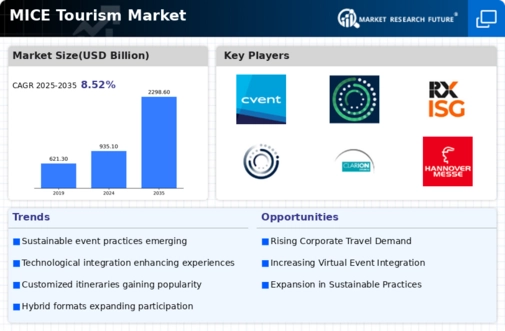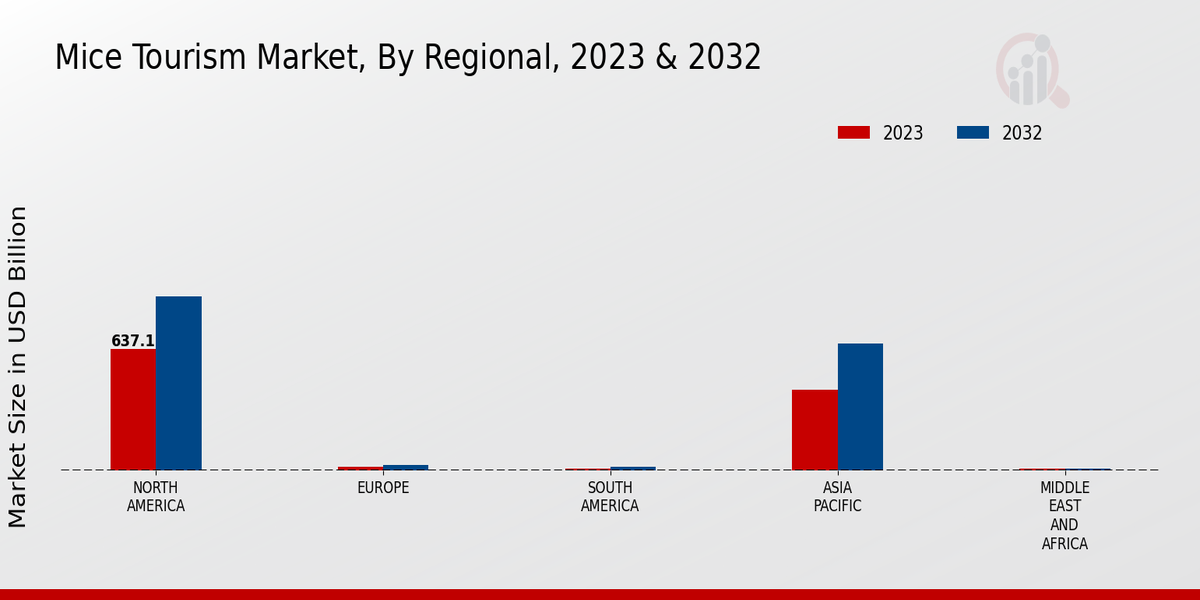Market Growth Projections
The Global MICE Tourism Market Industry is projected to experience substantial growth in the coming years. With a market value of 935.1 USD Billion in 2024, it is expected to reach 2298.6 USD Billion by 2035. This growth trajectory indicates a compound annual growth rate of 8.52% from 2025 to 2035. Such projections suggest that the industry is poised for expansion, driven by various factors including increased corporate spending, technological advancements, and the growing demand for sustainable practices. As the market evolves, stakeholders will need to adapt to changing trends and preferences to capitalize on the opportunities presented by this growth.
Technological Advancements
Technological advancements play a pivotal role in shaping the Global MICE Tourism Market Industry. Innovations such as virtual reality, augmented reality, and advanced event management software are enhancing the attendee experience and streamlining event organization. These technologies facilitate hybrid events, allowing for greater participation and engagement. As organizations increasingly adopt these tools, they may improve operational efficiency and attendee satisfaction. The integration of technology is expected to attract a broader audience, thus contributing to the market's growth trajectory. The anticipated compound annual growth rate of 8.52% from 2025 to 2035 indicates that technology will remain a key driver in the evolution of MICE tourism.
Rising Corporate Expenditure
The Global MICE Tourism Market Industry is experiencing a notable increase in corporate expenditure on meetings, incentives, conferences, and exhibitions. In 2024, the market is valued at approximately 935.1 USD Billion, reflecting a robust demand for professional gatherings. Corporations are increasingly recognizing the value of face-to-face interactions, which are believed to enhance collaboration and innovation. This trend is particularly evident in emerging economies where businesses are investing heavily in MICE activities to foster relationships and drive growth. As companies allocate larger budgets for MICE events, the industry is poised for substantial growth, potentially leading to a market value of 2298.6 USD Billion by 2035.
Emergence of New Destinations
The emergence of new destinations is reshaping the landscape of the Global MICE Tourism Market Industry. Traditionally popular cities are facing competition from emerging locations that offer unique experiences and competitive pricing. Destinations in Asia, Africa, and South America are increasingly positioning themselves as viable options for MICE events, attracting international organizations seeking fresh venues. This diversification of locations not only enhances the choices available to event planners but also stimulates local economies. As these new destinations gain recognition, they are likely to contribute to the overall growth of the market, providing alternatives to established MICE hubs.
Expansion of Global Connectivity
The expansion of global connectivity is a significant driver for the Global MICE Tourism Market Industry. Improved transportation infrastructure, including airports and high-speed rail networks, facilitates easier access to event locations. This increased connectivity enables more participants to attend international conferences and exhibitions, thereby enhancing the overall appeal of MICE events. Countries that invest in their transportation networks often see a corresponding rise in MICE tourism, as they become more attractive destinations for global events. As connectivity continues to improve, the market is likely to benefit from a surge in international attendance, further propelling its growth.
Growing Demand for Sustainable Practices
Sustainability has emerged as a critical focus within the Global MICE Tourism Market Industry. As environmental concerns gain prominence, event organizers are increasingly prioritizing eco-friendly practices. This includes selecting venues that adhere to sustainable standards, minimizing waste, and promoting carbon offset initiatives. The shift towards sustainability not only aligns with corporate social responsibility goals but also appeals to a growing demographic of environmentally conscious attendees. By adopting sustainable practices, MICE organizers can enhance their brand image and attract a wider audience. This trend is likely to contribute to the overall growth of the market, as more stakeholders recognize the importance of sustainability in event planning.


















